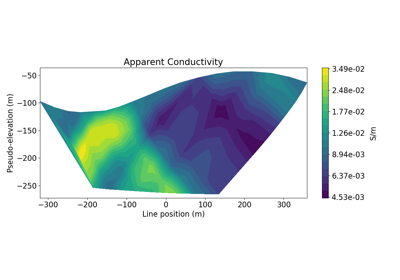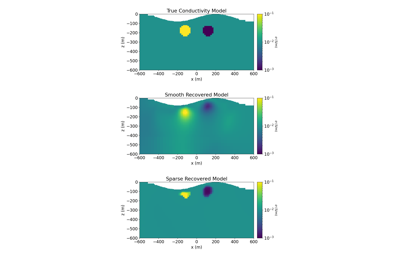SimPEG.electromagnetics.static.resistivity.simulation_2d.BaseDCSimulation2D#
- class SimPEG.electromagnetics.static.resistivity.simulation_2d.BaseDCSimulation2D(mesh, survey=None, nky=11, storeJ=False, miniaturize=False, do_trap=False, fix_Jmatrix=False, surface_faces=None, **kwargs)[source]#
Bases:
BaseElectricalPDESimulationBase 2.5D DC problem
Attributes
matrices to be deleted if the model for conductivity/resistivity is updated
Whether to fix the sensitivity matrix between iterations.
Number of kys to use in wavenumber space.
Whether to store the sensitivity matrix
Array defining which faces to interpret as surfaces of Neumann boundary
The DC survey object.
Methods
Jtvec(m, v[, f])Compute adjoint sensitivity matrix (J^T) and vector (v) product.
Jvec(m, v[, f])Compute sensitivity matrix (J) and vector (v) product.
dpred([m, f])Project fields to receiver locations :param Fields u: fields object :rtype: numpy.ndarray :return: data
fields([m])u = fields(m) The field given the model.
fieldsPairalias of
Fields2DfieldsPair_fwdalias of
FieldsDCgetJ(m[, f])Generate Full sensitivity matrix
getSourceTerm(ky)takes concept of source and turns it into a matrix
fields_to_space
Galleries and Tutorials using SimPEG.electromagnetics.static.resistivity.simulation_2d.BaseDCSimulation2D#

2.5D DC Resistivity and IP Least-Squares Inversion




